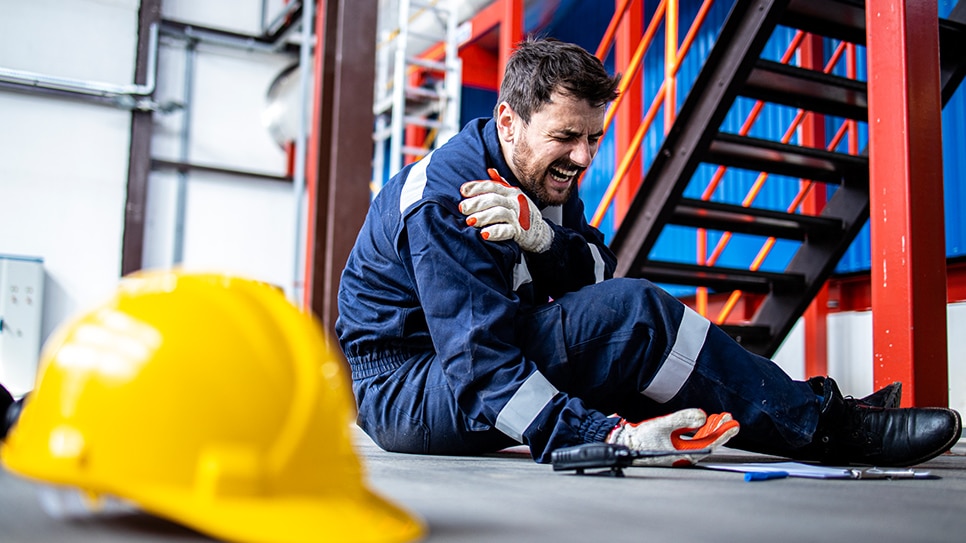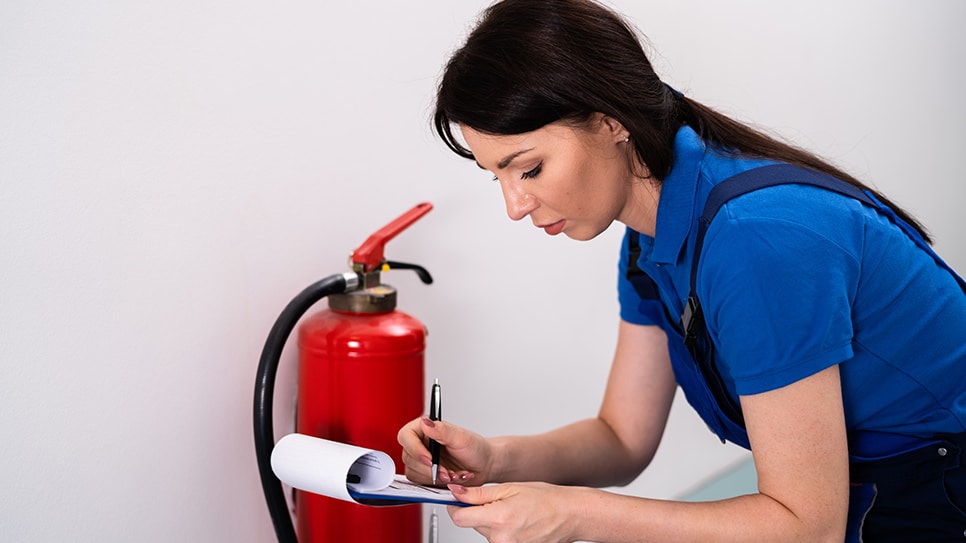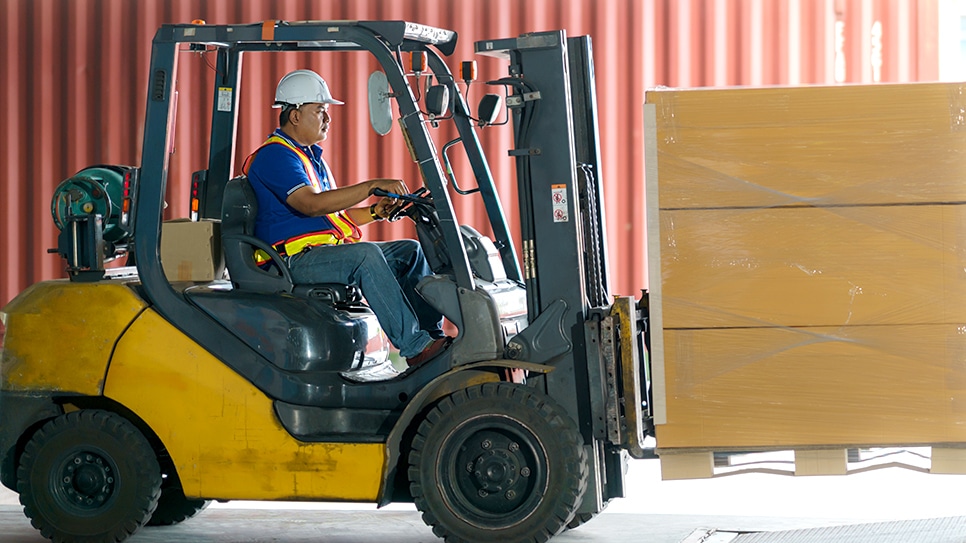
Personal Protective Equipment (PPE) Training for Employees & Businesses
Give your workers confidence knowing they are protected from physical harm while performing their duties.
Course description
Traliant’s Personal Protective Equipment training is a 30-minute course explaining what PPE is and how it can keep them safe. Workers learn best practices related to PPE and review the common forms of PPE for the eyes, ears, head, hands, feet, respiratory systems and full body.
Traliant’s PPE course, when used in conjunction with an employer’s hazard assessment and hands-on demonstration of the proper donning and doffing of the PPE needed per the hazard assessment, meets federal standards and helps employers maintain a safe work environment.
ONLINE TRAINING
Personal Protective Equipment (PPE) Training for Employees & Businesses
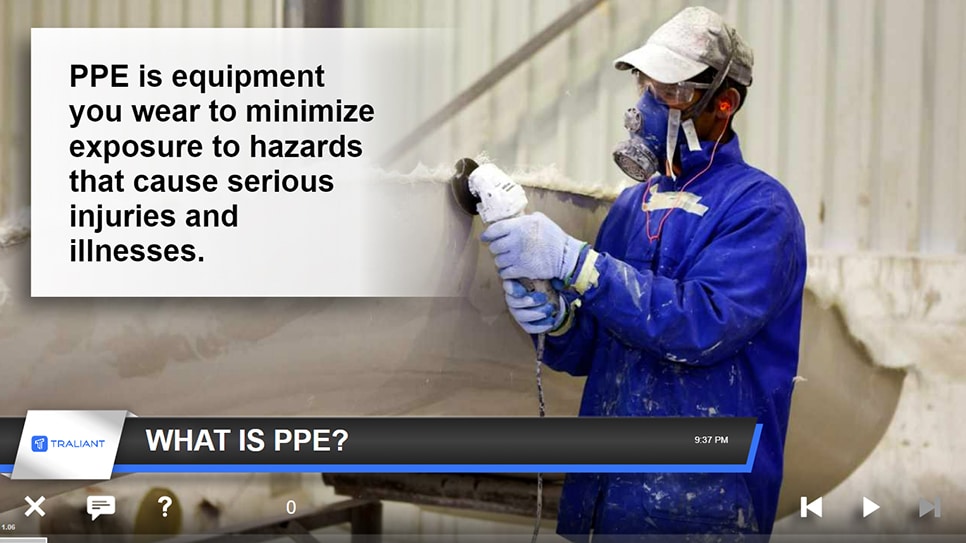
Personal Protective Equipment covers these topics and more:
- Why PPE is important
- Types of head, ear and eye protection
- Respiratory PPE, Protective Clothing, and PPE for hands and feet
- The different hazards PPE is designed to protect workers from
- PPE training requirements
KEY FEATURES
Why you'll love our training
It’s time to embrace a new era of online training with a valued partner who will ensure seamless implementation, along with a learning experience your employees will truly enjoy.
Course administration
Traliant makes it simple to roll out training to your workplace and provide technical support directly to your employees at no additional cost.
Course customizations
Tailor courses to include your logo, relevant policies, workplace images, and more. Traliant can even customize the course with scenarios that take place in your own workplace environment.
Translations
Training is available in English, Spanish and is supported in over 100 languages.
What to consider when choosing the most effective Personal Protective Equipment (PPE) training
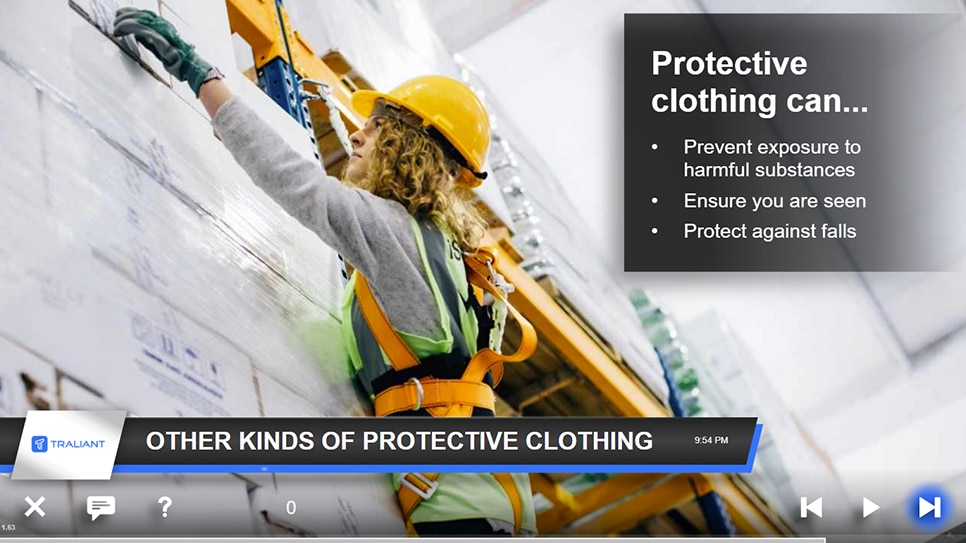
- Protect employees from hazards: PPE is designed to protect employees from various workplace hazards, such as chemicals, falling objects, loud noises, and biohazards. Proper training ensures that employees understand the risks and how to use PPE effectively for protection.
- Comply with OSHA regulations: The Occupational Safety and Health Administration (OSHA) mandates PPE training for employees who are exposed to workplace hazards. Training helps organizations meet these legal requirements.
- Reduce workplace injuries and illnesses: By ensuring employees know how to use PPE correctly, organizations can significantly reduce the risk of workplace injuries and illnesses.
- Empower employees: Training provides employees with the knowledge and skills they need to make informed decisions about their safety and to use PPE effectively.
- Strengthen your organization's commitment to safety: Training demonstrates the company's commitment to providing a safe working environment and to protecting the health of its employees.
- Reduce the risk of accidents and injuries: When employees understand how to use PPE correctly, they are less likely to be injured on the job.
- Head protection: Hard hats, helmets, bump caps.
- Eye protection: Safety glasses, goggles, face shields.
- Ear protection: Earplugs, earmuffs.
- Respiratory protection: Respirators, masks.
- Hand protection: Gloves.
- Foot protection: Safety shoes, boots.
- Protective clothing: Coveralls, aprons, vests.
- Physical hazards: Falling objects, flying particles, sharp edges, electrical hazards.
- Chemical hazards: Exposure to hazardous chemicals, such as acids, solvents, and pesticides.
- Biological hazards: Exposure to bacteria, viruses, and other microorganisms.
- Radiological hazards: Exposure to radiation.
- Types of PPE: Employees should learn about the different types of PPE available and how to choose the right PPE for specific tasks.
- Proper use and maintenance: Employees should know how to properly wear, adjust, and maintain their PPE.
- Limitations of PPE: Employees should understand the limitations of PPE and when it is not appropriate to rely solely on PPE for protection.
- Inspection and replacement: Employees should know how to inspect their PPE for damage and when to replace it.
- Donning and doffing: Employees should learn the proper procedures for putting on and taking off their PPE.
- Conduct a hazard assessment: Identify the hazards present in the workplace.
- Provide appropriate PPE: Provide employees with the appropriate PPE for the hazards they face.
- Train employees on the proper use of PPE: Ensure that employees know how to use their PPE effectively.
- Ensure that PPE is properly maintained and stored: Establish procedures for the maintenance and storage of PPE.
Employers are responsible for training workers on the use of Personal Protective Equipment (PPE). According to OSHA (Occupational Safety and Health Administration) regulations, employers must:
- Assess workplace hazards to determine the need for PPE.
- Provide appropriate PPE to employees at no cost.
- Train employees on:
- When PPE is necessary.
- What type of PPE is required.
- How to properly wear, adjust, and remove PPE.
- Limitations of the PPE.
- Proper care, maintenance, and disposal of PPE.
Employers must also ensure workers demonstrate an understanding of the training and the ability to properly use PPE before performing tasks that require its use. Regular retraining may be required if workers fail to use PPE correctly or if the workplace changes.



